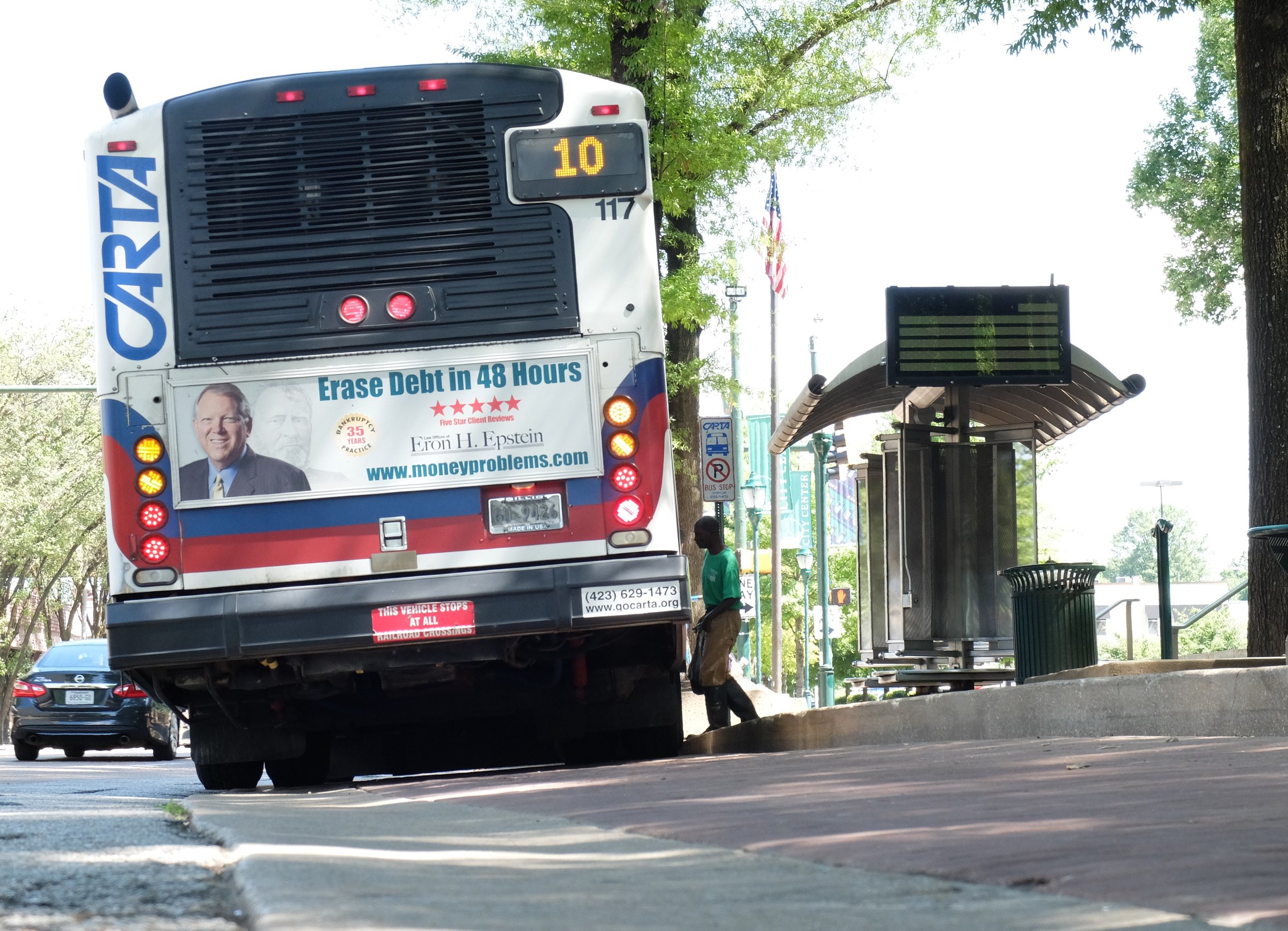What is more important to Chattanooga's future: expanding public transportation to more people or improving transportation where it is most used?
That's the question Chattanooga Area Regional Transportation Authority officials are being asked to answer as they formulate a 5-10-year growth plan for the area's bus system.
CARTA is now in the transit concepts phase of its 2-year process to plot a future for the bus system through public input and the guidance of transit design consultants Jarrett Walker and Associates (JWA).
Late last week, CARTA and the consultants held three meetings to introduce rough concepts of how much and in which areas the system potentially could expand in the next few years to the CARTA board, the community and other interested parties.
"Do you want to keep a coverage orientation and keep serving all of these areas at a relatively low frequency, or do you want to go in a more ridership direction where you trim the areas that you serve, but you serve the areas with high frequency and serve them very well?" Scudder Wagg, JWA senior associate, said Friday. "And these aren't designed to be pick one [approach] or the other."
Approach options
At the meetings, Wagg walked attendees through four preliminary plans:
- The ridership concept, which focuses 80% of growth on improving the number of riders using CARTA. That concept has fewer people and jobs near any service, but more people and jobs near frequent service (a bus coming every 15 minutes). With service concentrated in the busiest area, the average resident can reach 16% more jobs and 9% more people in 45 minutes on transit.
- The coverage concept, which focuses on providing some coverage to more jobs and people, but cuts the number of jobs and people reachable in 45 minutes down because resources are spread so thinly.
- The growth concept, which grows CARTA's overall service by 60%, putting more people and jobs near any service and near frequent service. As a result, the average resident can reach 35% more jobs and 30% more people in 45 minutes by transit.
- The vision concept, which has far more people and jobs near any service and near frequent service by increasing overall service by 130%. As a result, the average resident can reach 61% more jobs and 48% more people in 45 minutes by transit.
After presenting each plan and the pros and cons of each, Wagg emphasized at each meeting that these are not clear-cut decisions, but rather scales and metrics with which to plan exactly what CARTA should do, knowing what improving each aspect will bring to the community.
"The questions that we're asking you are value questions about what the community wants us to do," he said. "They're not questions with technically right answers that I as a transit expert should tell you what to do."
At the Friday stakeholders' meeting with representatives from the Tennessee Department of Transportation, the Chattanooga mayor's office, the University of Tennessee and other relevant organizations, Wagg polled attendees about what their priorities are, how much they are willing to invest and how much CARTA should grow in the near future.
While costs of the potential redesigns have not been identified and there is no plan to levy a fee or tax, attendees were asked to start considering how much of an investment they were willing to make. Asked how much extra they would be willing to pay per month, 31% indicated they would be willing to pay between $5 and $9 month (the amount required for the growth plan) and 33% said they would pay between $10 and $14 monthly.
The poll also showed most stakeholders support ridership over coverage, but to a slightly lower extent than the ridership concept, with 43% in favor of dividing resources 70%/30%, ridership over coverage, getting the most votes of any ratio.
In the room, 96% believed there should be some transit growth over the next 5-10 years, with 31% supporting 50-70% growth (the growth scenario) and 23% supporting 100-130% growth (the vision scenario).
Community input
At the public input community meeting Thursday night, most questions reflected a desire to ensure equity for lower-income riders.
"Does what you're looking at in these scenarios take into account just pure population or pure jobs, or does it take into account where the population is that needs transportation because they can't afford a car?" community member John Hubbard asked. "Does it take into account the kinds of jobs that those people can get? Do we need transportation for the people who make a hundred grand and have five cars?"
Wagg said those were all concerns of the firm, as well.
"We do look at those things to the extent that there is enough data to know those things in enough detail," he said, referencing the earlier project report that includes income and vehicle data. "Those need factors are certainly things we have looked at as we designed the concepts. In terms of jobs, we have data on the total number of jobs, but the information on the skill level or pay level of jobs is usually not detailed enough on a low enough level of geography to be able to look that closely."
CARTA and the consultant firm will gather public input through a survey available online and distributed among passengers and through public meetings with neighborhood and other community associations between now and the end of July. The goal is to choose a direction and draft a redesign plan by November, solidifying short-term and long-term goals by the end of the year.
To request a community meeting with your organization, contact transportation systems planner Philip Pulgliese at philippugliese@gocarta.org.
To take the public input survey or watch for updates and public meetings, visit gocarta.org.
Contact Sarah Grace Taylor at staylor@timesfreepress.com or 423-757-6416. Follow her on Twitter @sarahgtaylor.

